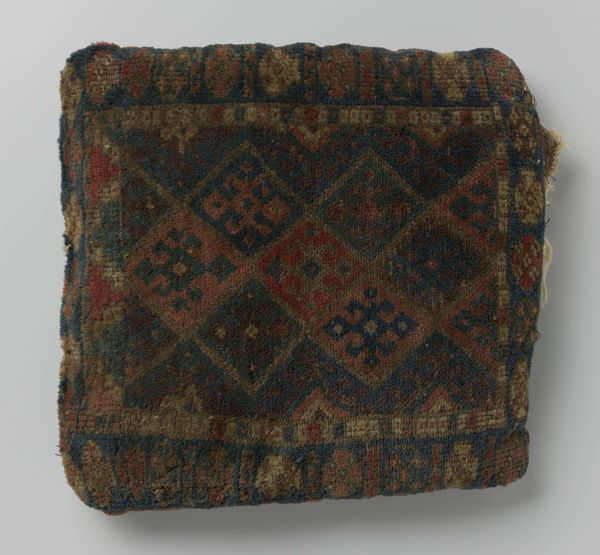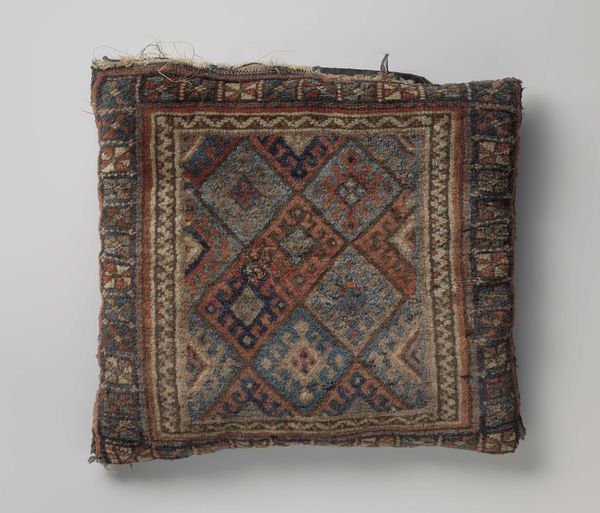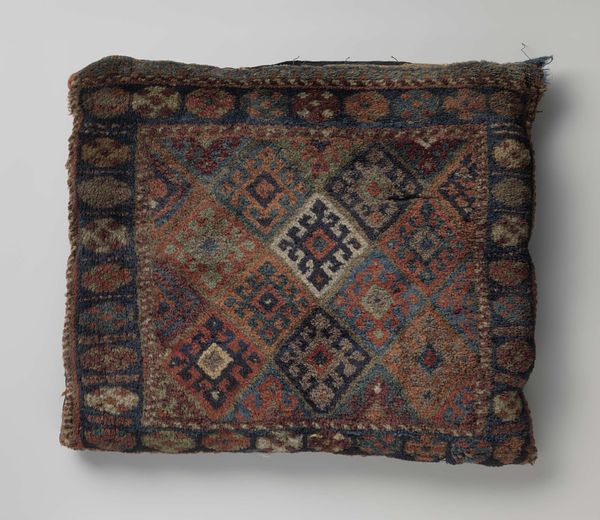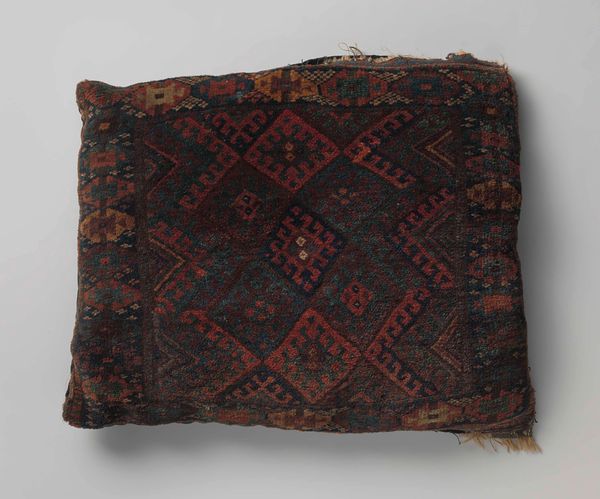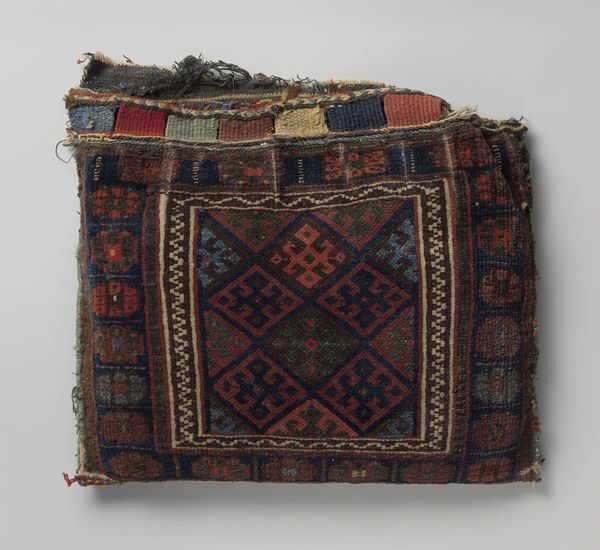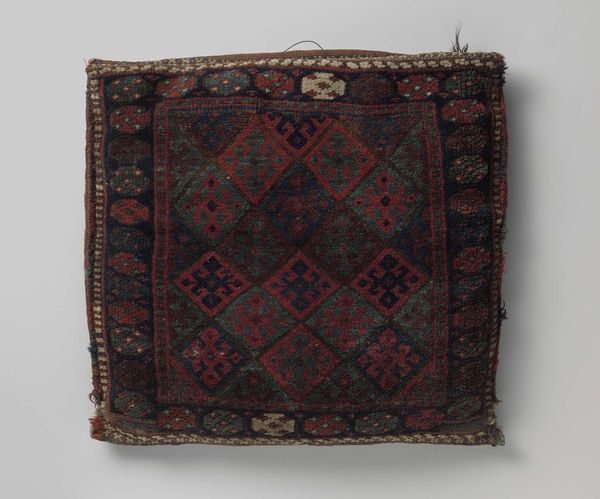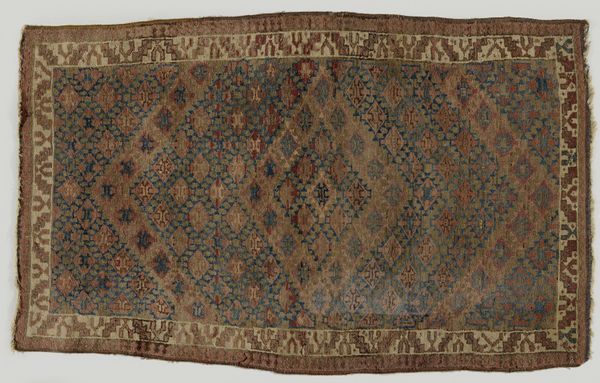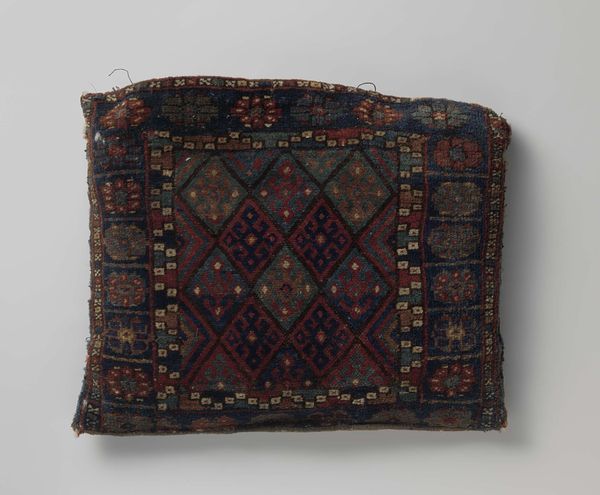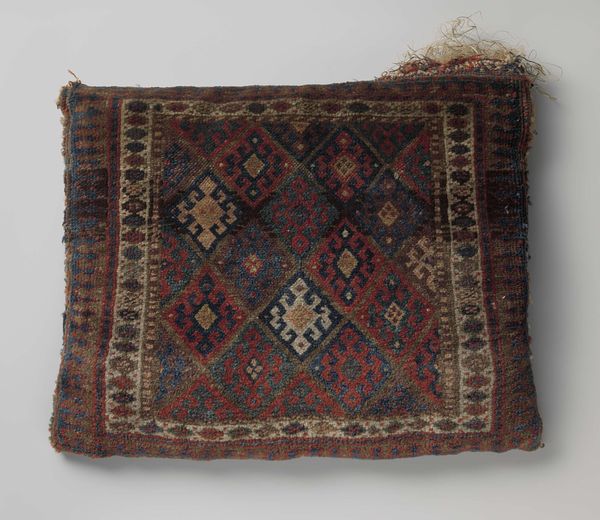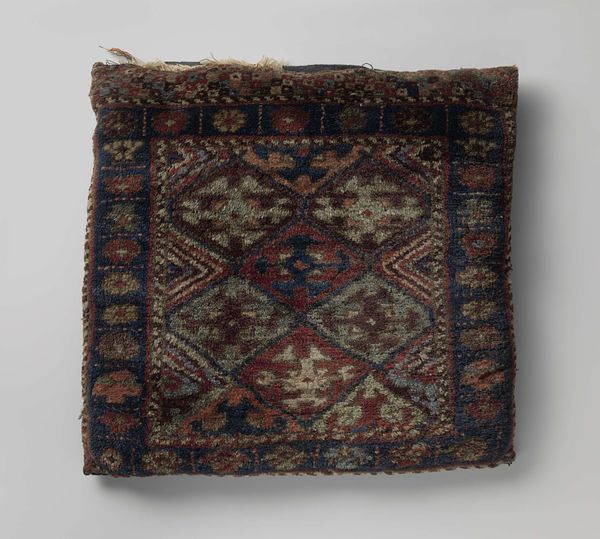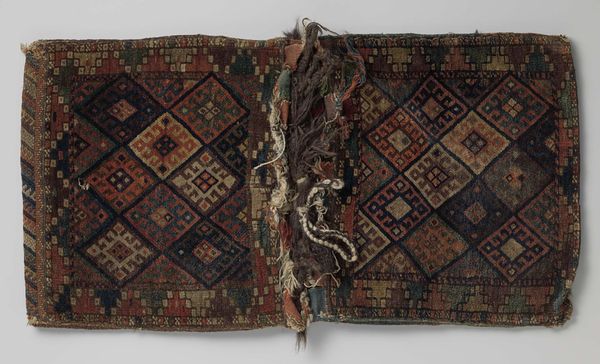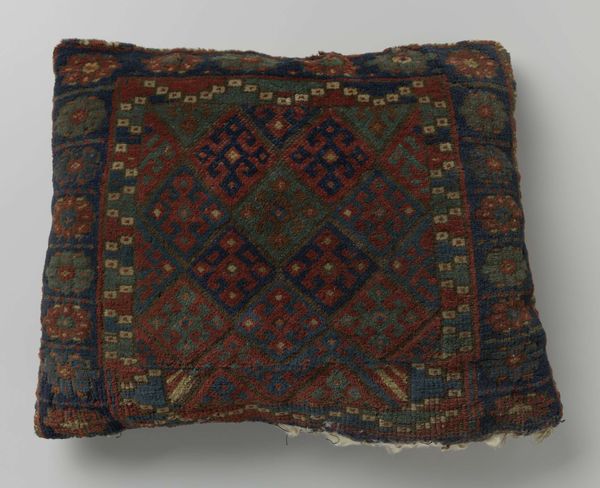
weaving, textile
#
african-art
#
pattern
#
weaving
#
textile
#
geometric
#
repetition of pattern
#
regular pattern
#
pattern repetition
Dimensions: height 48 cm, width 62 cm, depth 9 cm
Copyright: Rijks Museum: Open Domain
This is a saddlebag decorated with a grid pattern of swastika flowers, crafted by the Jaffi people. The Jaffi are a Kurdish tribe, and their weavings are visual records of a nomadic existence, and the cultural exchanges that occur across their trade routes. The swastika, here represented as a stylized floral motif, has ancient roots as a symbol of good fortune. This benign meaning was tragically overshadowed in the 20th century, complicating the interpretation and reception of such weavings. Consider the emotional weight of encountering such a symbol, now laden with the history of appropriation and hate. Does seeing it in its original cultural context allow for a reclamation of its earlier meaning? How does this object challenge us to reconcile the beauty of cultural tradition with the painful realities of historical misuse and cultural trauma?
Comments
No comments
Be the first to comment and join the conversation on the ultimate creative platform.
